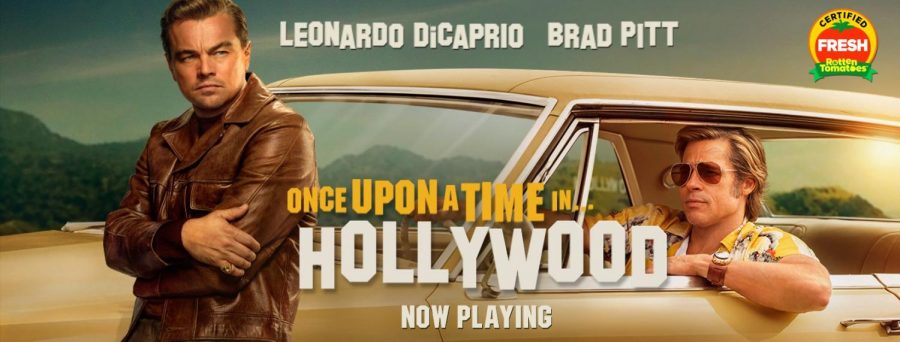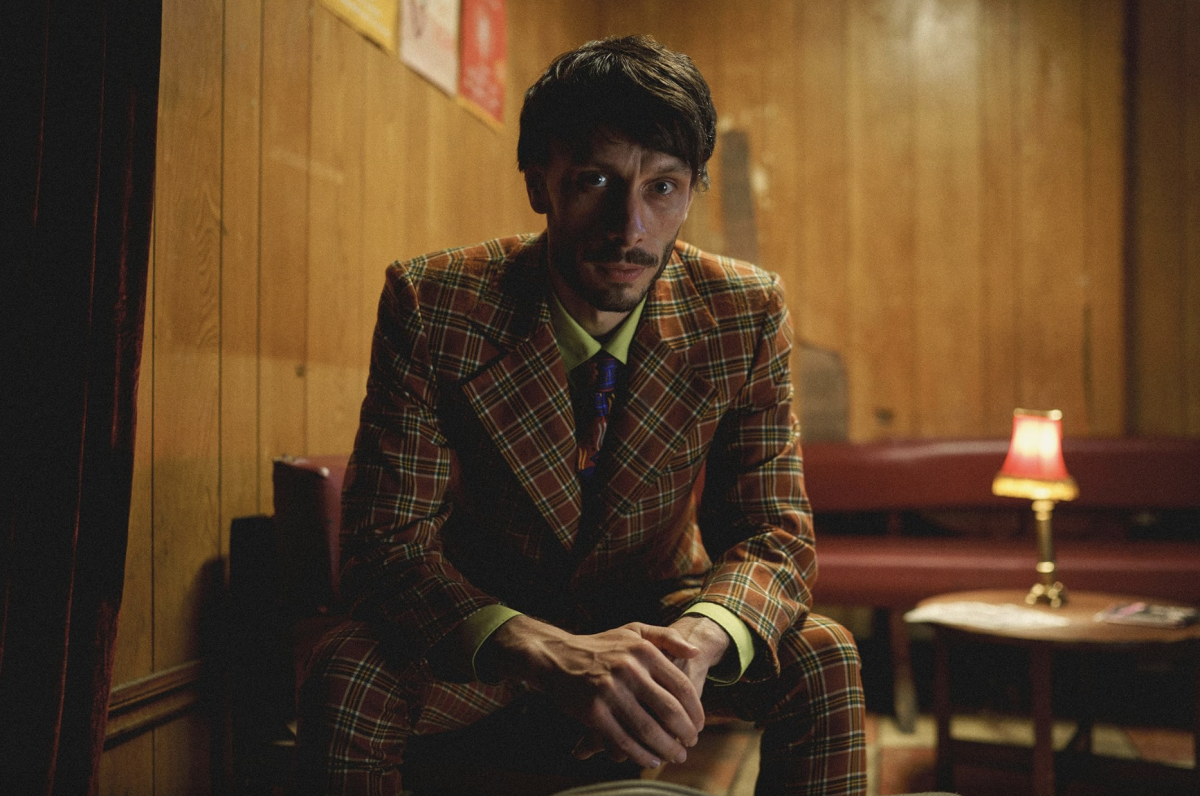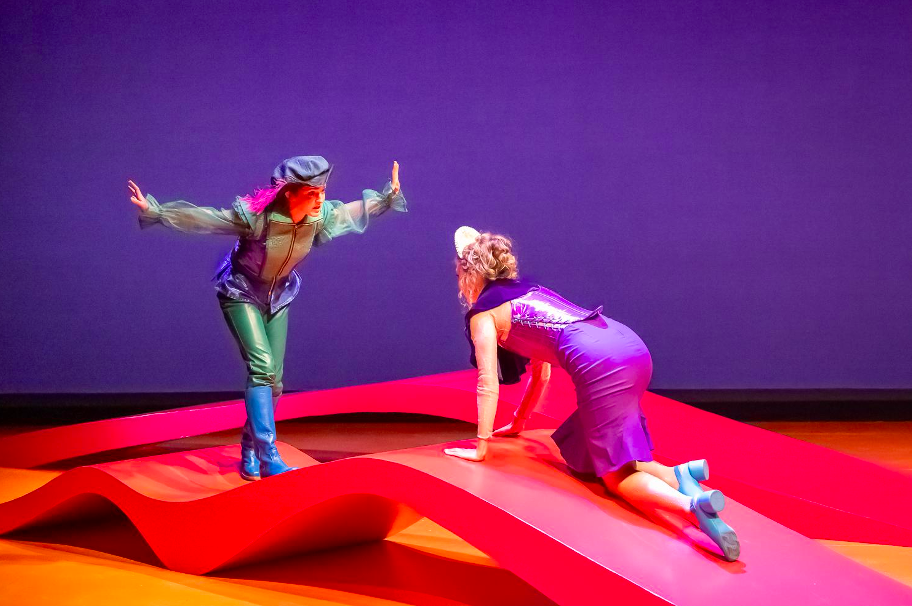“Once Upon a Time…in Hollywood” presents an elaborate cinematic world that is driven by director Quentin Tarantino’s nostalgia for a lost cinematic age. It has been called his love letter to Hollywood, as he recreates the Hollywood he remembers from his childhood growing up around Los Angeles.
The film is set in 1969, a period of tension in Hollywood. At the time, the industry began to move out of the age of big studios “Old Hollywood” glamour and into an age of more freedom and independence, as hippie counterculture was on the rise.
Even though the environment of the film is real, the main characters are fictional. The film revolves around Rick Dalton (Leonardo DiCaprio), a has-been TV Western star trying to find his place in the changing culture of Hollywood and his stuntman, Cliff Booth (Brad Pitt).
However, real historical figures and events are included in the storyline, overlapping history with the characters of his imagination. As seen in his 2009 film “Inglorious Bastards,” Tarantino takes creative liberty with historical accuracy in his work. In “Once Upon a Time,” the late actress Sharon Tate (Margot Robbie) is a character. Tate was famously a victim of the tragic Tate-LaBianca murders committed by the Manson family in August 1969. Tarantino doesn’t glorify Tate’s fate, but celebrates her warm essence as a juxtaposition of the new young artists taking over Hollywood as she moves into the Hollywood Hills house right next to Dalton.
The majority of the film takes place over a three-day period, with the exception of a few flashbacks and a flash-forward to the day of the Tate-LaBianca murders. Up until the flash-forward to the murders, there is not much plot to the film, but rather a journey through the daily lives of these three characters, representing where Hollywood once was and where it is going. There isn’t much to the story of the film, because more than anything, Tarantino wanted the film to be focused on his recreation of 1969 Hollywood, so he could “wallow in the mire of the period.”
Tarantino is able to pull off cinematic feats that not many directors could pull off. It is astounding how he creates such extensive cinematic worlds that are so carefully designed. He doesn’t miss a single street sign or store front. Though the ideas come from Tarantino, he does not build these designs all by himself. He wouldn’t have been able to pull off “Once Upon a Time…In Hollywood” without the help of his cinematographer, Robert Richardson (who is working on his sixth Tarantino film) and his production designer, Barbara Ling. Like Tarantino, Ling also grew up on the outskirts of Los Angeles during the 1960s, and in an interview with Vulture, she says she remembers “hitchhiking around to different neighborhoods with the sense that the entire city was open.”
Tarantino captures this wonder of the city as it was in 1969 which gives the audience much to be visually in awe of. His detailed production design includes his own made up dog food brand, “Good Food for Mean Dogs” which is prominently featured in the scene where Cliff Booth feeds his dog Brandy in his rickety trailer home parked behind a drive-in movie theater. In addition, to add a little bit the kitschy qualities of the film, he includes a “vintage Taco Bell” the location scouts found in Orange County.
Much of the film takes place in cars driving around Hollywood; therefore, his team had to transform four blocks of Hollywood Boulevard back to their 1960s state. His production team modified the area down to every highway sign. Nothing was left to CGI or post-production, everything was physically built into the set decoration of the street. The fact that Tarantino was able to shut down such busy roads, including Hollywood Boulevard, for his film proves his stature in Hollywood. With this being his ninth feature film, he is already one of the great directors of our generation.
For the tone of the film, Tarantino wanted to capture both the old, dying age of Hollywood as well as the new, vibrant age that was coming. This is where cinematographer Robert Richardson relied on his past collaborations with Tarantino. According to an Insider interview with Richardson, “For Quentin, film is lifeblood…He shoots on film. He screens all his dailies on film. I knew I had to come up with a look on film that I would be able to give him.”
One of the more impressive shots in the film is the Western scene, where the audience is taken out of the plot of Tarantino’s film for a scene and put into the plot of the Western TV show Rick Dalton is guest appearing on. This scene features some big-name guest stars like Timothy Olyphant and Luke Perry, and it is one of the most memorable shots in the film. It has a continuous flow, not missing a second of DiCaprio’s compelling performance. Insider reported, “It doesn’t cut to anybody. It continues to flow until he’s totally upset, and then it repeats the same camera movements.”
“Once Upon a Time…In Hollywood” is Tarantino’s love letter to Hollywood and simply, a cinematic masterpiece. It’s unique cinematography and set decoration beautifully captures the wonder of Hollywood in 1969, and the visuals of the film is reason enough to go see it.
Nicole Bates can be reached at [email protected].



















